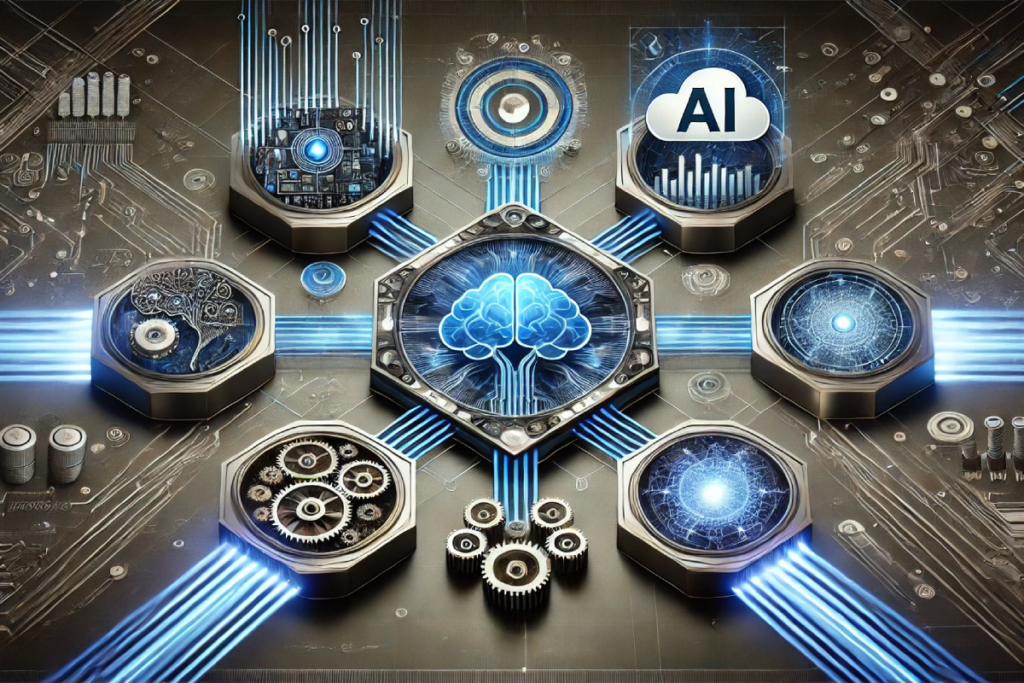AI-powered devices are rapidly transforming industries, enabling smarter, more efficient, and highly personalized experiences. As AI technologies continue to evolve, the integration of Copilot features into devices is becoming increasingly common. Copilot, an AI assistant integrated into devices, enhances user interactions by providing contextual support, automation, and predictive capabilities. In this blog post, we’ll explore the five key components required to build AI-powered devices with Copilot, highlighting the importance of each element in creating cutting-edge solutions.
1. Advanced Machine Learning Algorithms
The foundation of any AI-powered device is its machine learning (ML) algorithms. High-volume keywords: “machine learning algorithms,” “AI device technology,” “ML models for AI devices.”
Why It’s Important
Machine learning algorithms enable devices to learn from data, identify patterns, and make decisions without explicit programming. For Copilot features, these algorithms are essential for processing vast amounts of data, understanding user behavior, and providing real-time assistance.
Example: In a smart home device, ML algorithms can predict user preferences, adjust settings automatically, and provide timely recommendations based on past interactions.
2. Natural Language Processing (NLP)
Natural Language Processing (NLP) is a critical component for enabling Copilot to understand and respond to user commands in natural language. High-volume keywords: “natural language processing,” “NLP in AI devices,” “voice-activated AI.”
Why It’s Important
NLP allows AI-powered devices to interpret human language, making them more intuitive and user-friendly. This capability is vital for Copilot features, which rely on voice commands and conversational interactions to assist users effectively.
Example: NLP enables a smart assistant to understand complex voice commands like “set a reminder for tomorrow morning” or “find the nearest Italian restaurant,” making the device more responsive to user needs.
3. Real-Time Data Processing
For AI-powered devices to be truly effective, they must be capable of processing data in real-time. High-volume keywords: “real-time data processing,” “AI device responsiveness,” “instant data analysis.”
Why It’s Important
Real-time data processing allows devices to analyze information as it is generated, providing immediate feedback and responses. This is crucial for Copilot features, which need to react quickly to user inputs and changing conditions.
Example: In autonomous vehicles, real-time data processing enables the AI system to make split-second decisions based on current traffic, road conditions, and other environmental factors, ensuring safety and efficiency.
4. Seamless Integration with Cloud Computing
Cloud computing plays a vital role in the functionality of AI-powered devices with Copilot, offering scalable resources and remote processing power. High-volume keywords: “cloud integration for AI,” “AI and cloud computing,” “cloud-based AI devices.”
Why It’s Important
Integrating AI devices with cloud computing allows for the storage and processing of large datasets, advanced AI model training, and seamless updates. Copilot features benefit from cloud integration by offloading complex tasks to the cloud, reducing the device’s hardware requirements, and ensuring continuous learning and improvement.
Example: A wearable fitness device with Copilot can sync data to the cloud, where AI algorithms analyze the user’s health metrics and provide personalized fitness recommendations.
5. User-Centric Interface Design
The effectiveness of an AI-powered device depends heavily on its user interface (UI) and experience (UX). High-volume keywords: “user-centric interface,” “AI device UX,” “intuitive AI design.”
Why It’s Important
A well-designed UI ensures that users can easily interact with the device and access Copilot features without a steep learning curve. Intuitive design and accessibility are key to making AI-powered devices appealing and practical for everyday use.
Example: A smart thermostat with a touch screen and voice control offers a seamless user experience, allowing users to set temperatures, view energy usage, and receive tips from the Copilot without frustration.
Conclusion
Building AI-powered devices with Copilot requires a strategic approach that incorporates advanced machine learning algorithms, natural language processing, real-time data processing, cloud computing integration, and user-centric interface design. By focusing on these key components, developers can create innovative devices that not only enhance user experiences but also push the boundaries of what AI technology can achieve.


